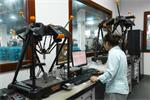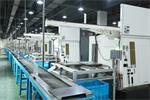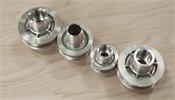Equator™ gauging system ensures pneumatic component quality
Increasing pressure on high-volume production, whilst maintaining strict part tolerances, demanded a move away from traditional manual inspection and measurement techniques. Renishaw's Equator gauging system ensured AirTAC kept pace with rising quality goals while boosting productivity.
Background
AirTAC is one of the world's leading manufacturers of pneumatic components. Its extensive range of products includes cylinders, valves and FRL (filter, regulator, and lubricator) systems used by OEMs and system integrators in a variety of sectors, including electronics, automotive, packaging and construction.
Established in Taiwan in 1988, AirTAC operates three large-scale manufacturing plants; one in Tainan (Taiwan) and two in Guangdong and Ningbo (China). At its Ningbo site alone, AirTAC occupies an area of more than 400,000 m2 and runs 39 factories. The site holds over 1,000 machine tools and other production equipment, with a single department producing more than 3,000 individually numbered components.
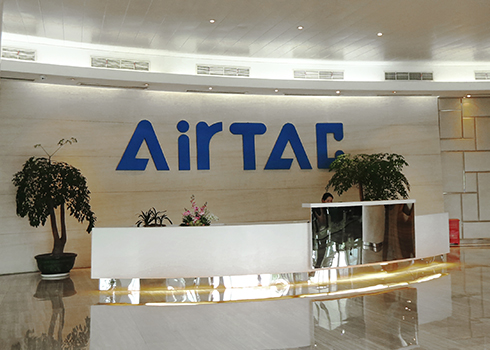
AirTAC Ningbo manufacturing plant, China
Challenge
Over time, the sheer scale of AirTAC's growing manufacturing operations presented increasing technical and commercial challenges for the part inspection process. The continued growth in the number of different parts, the large production volumes and extensive machine tool operations contributed to these challenges.
Historically, the company employed a range of conventional manual inspection techniques, including callipers and depth gauges. With rising costs, these labour-intensive and time‑consuming techniques were becoming detrimental to the company's finances.
Mr Wang, Manager of AirTAC's Quality Control Department, explained, “We wanted to ensure high quality on our products. It can be extremely difficult to guarantee a high level of consistency when measuring large volumes of parts per department only using traditional tools such as callipers, micrometers, and magnetic guide rails.”
“Naturally, the manual inspection and measurement processes also risked incurring human error, adversely affecting product quality and productivity,” he continued.
The pressure on component tolerances increased as the company's worldwide customer base expanded. In rapidly emerging and cutting-edge application areas, such as lithium battery manufacturing and smartphone assembly, some AirTAC customers were demanding tolerances as tight as 2 µm. Manual inspection techniques were incapable of assuring the levels of accuracy required.
Therefore, the company needed to find an automated inspection process to deliver higher quality and throughput of its pneumatic components, and increase part production traceability through data collection.
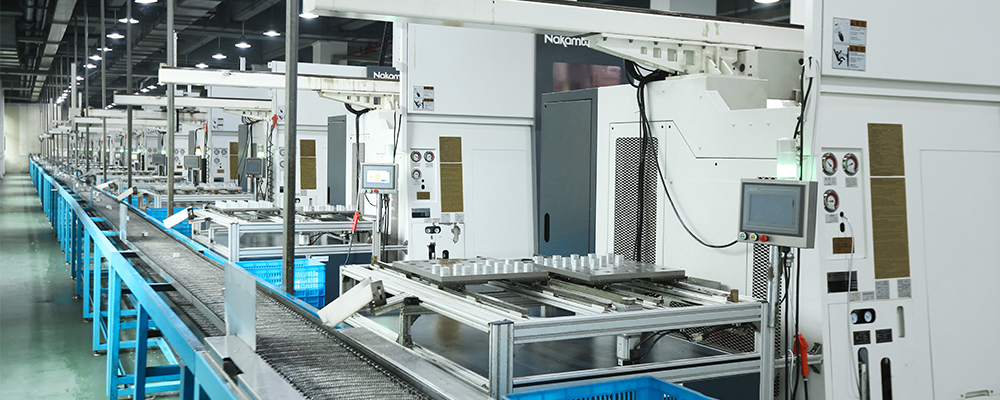
AirTAC's automation production line
Solution
AirTAC chose to use Renishaw's Equator™ gauging system, a high-speed comparative gauge suitable for the inspection of medium to high‑volume manufactured parts, to replace the manual component inspection and measurement processes at its Ningbo manufacturing plant.
The Equator gauging system's structure is based on a non‑Cartesian parallel kinematic constraint mechanism with high stiffness, ensuring excellent workpiece scanning repeatability at very fast operating speeds.
Equipped with a Renishaw scanning probe, the Equator gauge can capture 1,000 data points per second, enabling highly reliable three‑dimensional measurement and analysis of each component produced.
More than 20 Equator systems were deployed to control manufacturing processes on the shop floor. Both Equator 300 and Equator 500 systems are used, with the larger working volume of the Equator 500 Extended Height system (500 mm diameter and 400 mm in height) enabling AirTAC to accommodate larger components, such as 3-axis cylinders and other high‑precision transmission equipment.
The Equator system's small machine size to working volume ratio is a space‑efficient solution and avoided extensive plant modifications, easily fitting onto the existing Ningbo shop floor environment alongside machine tools.
Using Renishaw's IPC (intelligent process control) software, AirTAC can also constantly monitor the machining operation and automatically implement any necessary machine tool offsets signaled by the Equator measurement data.
AirTAC set up its initial Equator system measurement processes with support from Renishaw's technical team and a local agent. The three companies worked together to manage machine tool connection, Equator programming and exporting measurement data to dedicated online worksheets for storage and analysis.
Results
By implementing Equator gauging systems to provide automatic inspection, AirTAC has improved its manufacturing quality and productivity.
Capable of scanning speeds over 200 mm/s, the Equator gauging system takes, on average, just two minutes to fully measure a part; three times faster than the previous manual measurement process. Measurement has been simplified, standardised and made more accurate.
Feedback from the Equator system and IPC software means AirTAC's CNC machine tools can maintain part dimensions close to nominal and well within process control limits.
The ability to automatically correct any process drift has improved part quality, reduced scrap, and resulted in more effective management of cutting tool life.
Mr Wang also pointed out the importance of the Equator system's temperature stability on the Ningbo shop floor. Despite the installation of heating, ventilation, and air conditioning (HVAC), temperatures can vary between 10 ºC and 20 ºC, within a range of summer temperatures peaking at 38 ºC and winter temperatures as low as −5 ºC. Not affected by these fluctuations, the Equator system succeeded in maintaining measurement accuracy to a high repeatability of 1.5 μm to 1.6 µm.
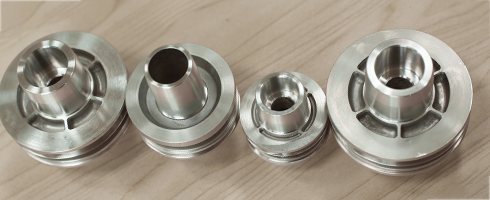
Pneumatic components
One of the main benefits we have found using the Equator is its ability to capture accurate measurement data. This completely removes the need for human intervention, which reduces the pressure on the operator to record data manually. In addition, the data is automatically saved in the Equator, which sends automatic feedback to the machine tools, which can be used for integration and trend analysis to identify whether any parts would need manufacturing enhancement.
AirTAC Co., Ltd (China)


